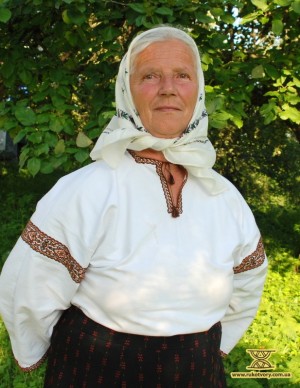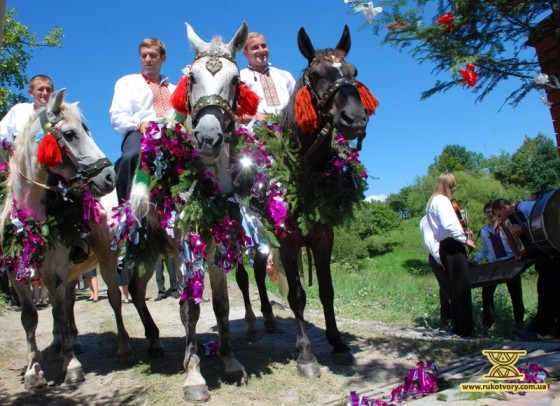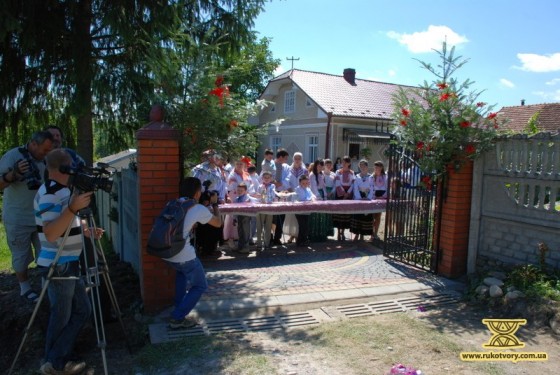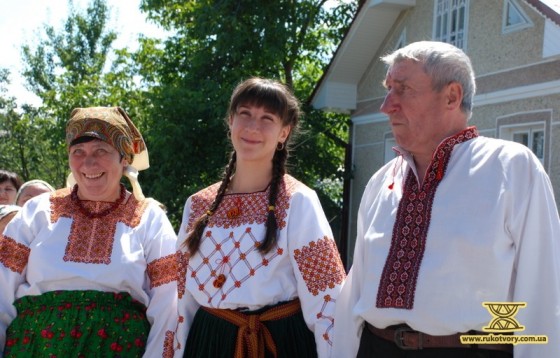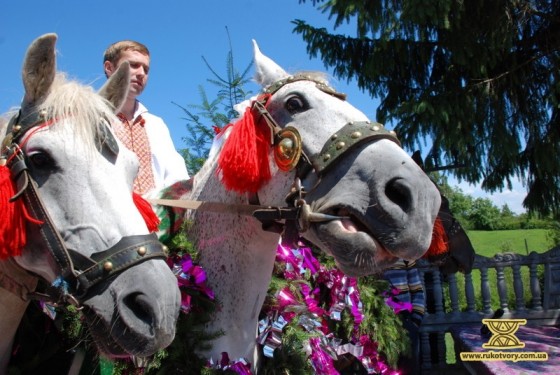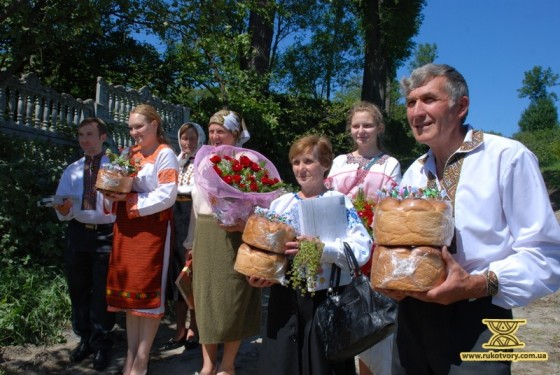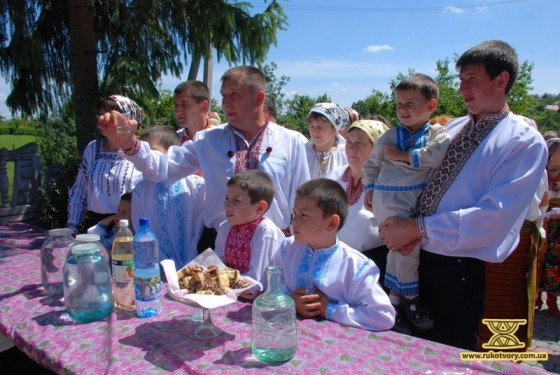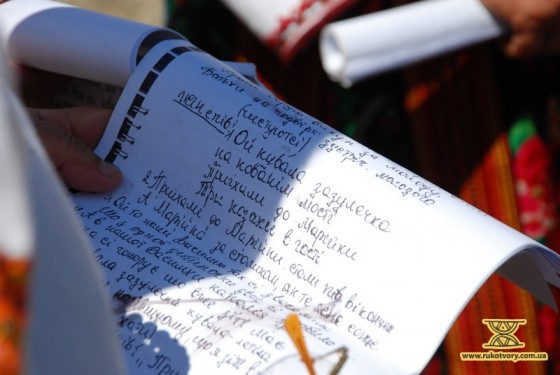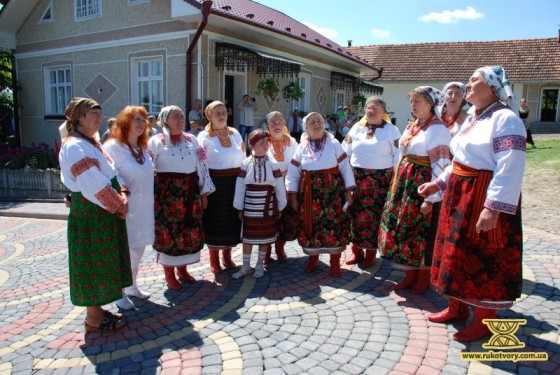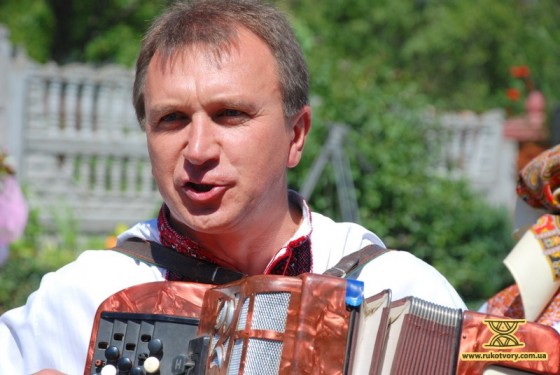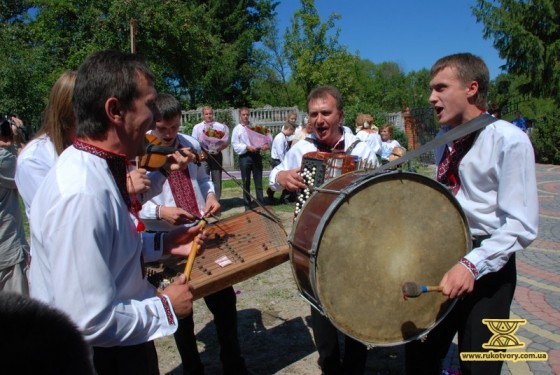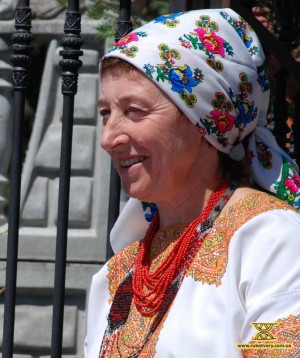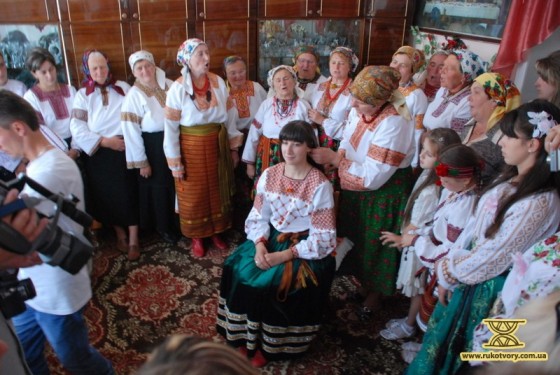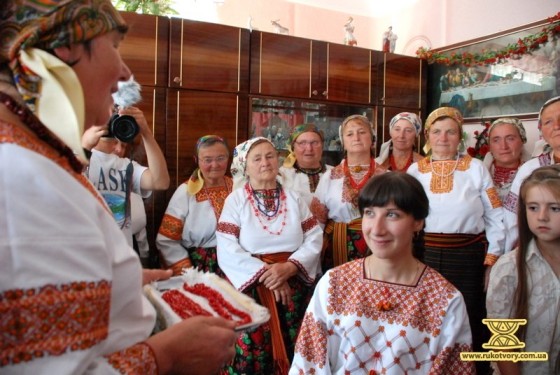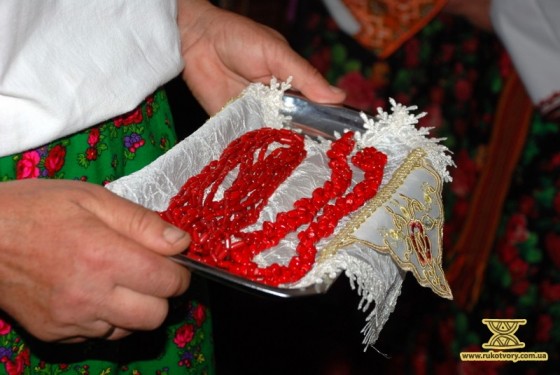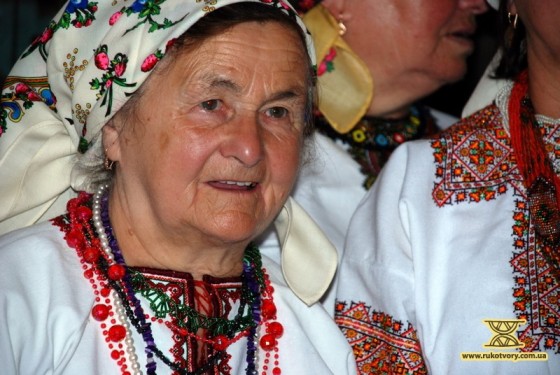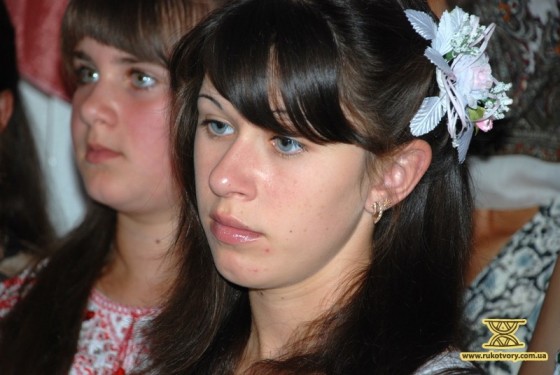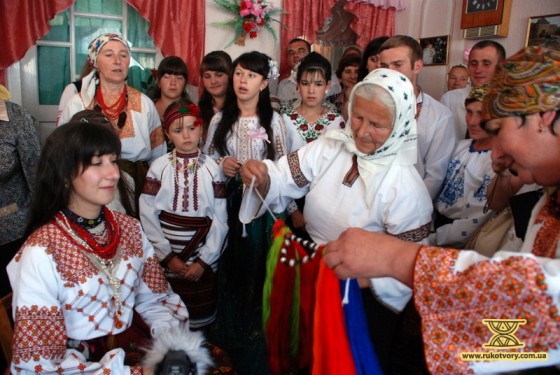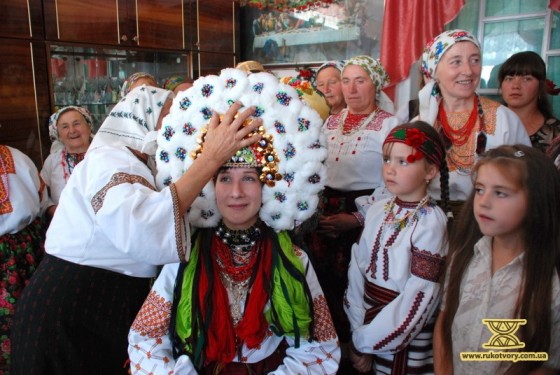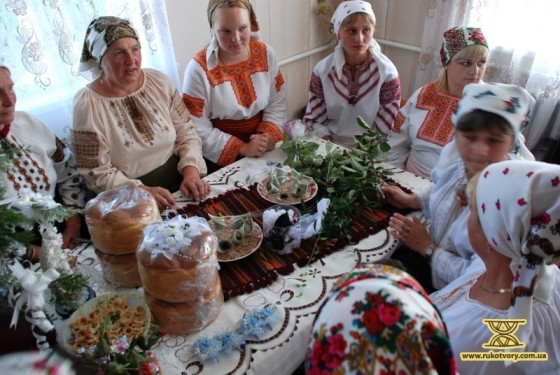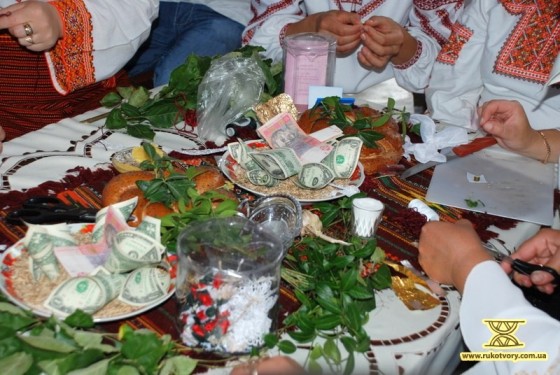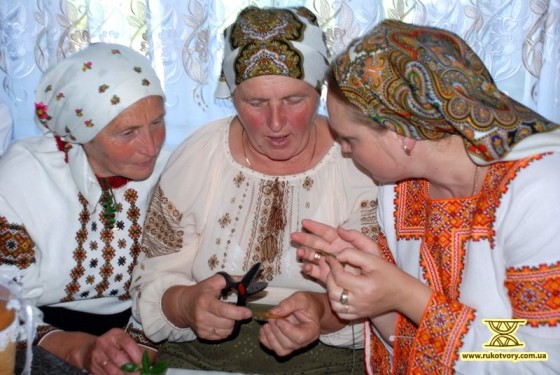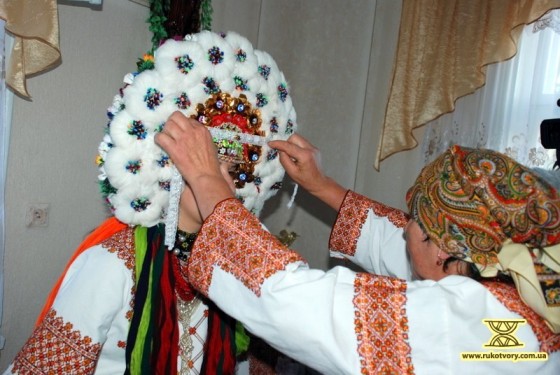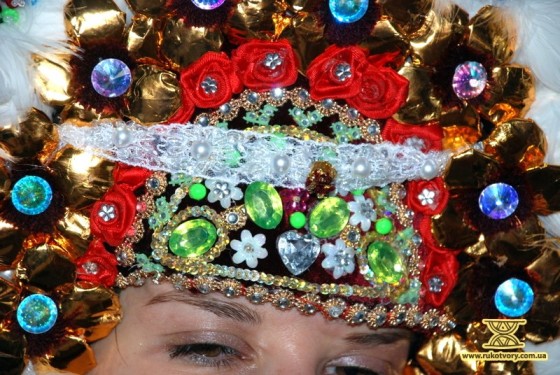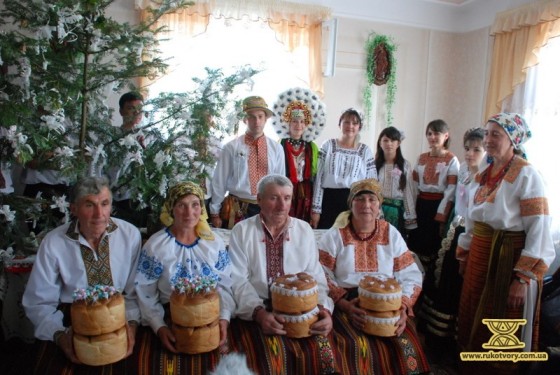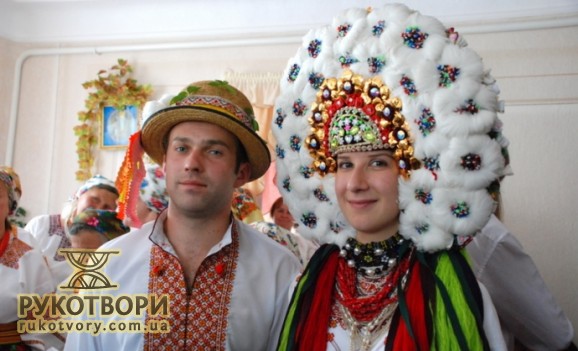
“My hair was braided on Monday and it remained braided till Thursday…”
Watching Ukrainian brides wearing huge wreaths of goose feathers in old photographs I have never imagined I would be able for real to see a contemporary bride wearing this kind of wedding head dress. But in August this year I chanced to visit a wedding in the traditional style that took place in Veliky Kluchiv village in Ivano-Frankivsk region. This village is famous for its unique wedding head dresses.
To say the truth, nowadays this custom is maintained due to 75 year old Paraska Kushlyak, who is the only person in the village able to make original wedding head dresses from feathers. Sometimes they can be seen in museums or at festivals.
Paraska Kushlyak, a master of feather wedding head dresses:
“I myself was wed in this kind of wreath. So, my hair was braided on Monday and it remained braided till Thursday… I had to sleep with my head on my hands because it was not possible to turn. I remember my hair was done so tight and hurt so much that when it was unbraided a wisp of hair just fell out.
I learned to make such wreaths by myself. Some time ago a lady used to make them for weddings and I helped her to redo things when they fell apart or unbraided. I also used to see these wreaths in different pictures. It takes about two weeks to complete one work. For this, one needs beads, foil, and goose feathers. Each wreath is about a kilogram of weight, they are not very heavy.
Not often, but still the tradition is maintained by the young village people, too, for example by Roman Genyk, aged 28, and Mariyka Kunyk, four years younger than Roman. They arranged their wedding in the folk style.
Recording of a wedding song from Veliky Kluchiv, Ivano-Frankivsk region
[uppod url=https://rukotvory.com.ua/wp-content/uploads/2011/11/VN860047.mp3]
Recording of wedding music from Veliky Kluchiv
[uppod url=https://rukotvory.com.ua/wp-content/uploads/2011/11/VN860050.mp3]
Mariyka Kunyk, the bride:
“We wanted our wedding in the ancient style because we respect our old culture. Our neighbors and family helped us; everyone was excited and supported me because not every young girl would be ready for all this attention, ceremonies and costumes. This wreath is of a certain weight, too, but everything is worth it. It’s wonderful and merry feeling. Such a day happens only once in life so you understand you should enjoy it because it will not happen again.
The chemise and the skirt are mine; the necklace was given to me by my mom who in turn got it from her mom. The corals in the necklace are real. So this is a family relic. The chemise is 10 years old. It is made of linen and embroidered by my mother. My mother first made it too big for me and said “God give this chemise will fit at the time when you are a bride” and her words served as a kind of a prophecy because everything happened exactly this way. The same was said to my mother by a lot of people about the wreath: “You know, Mariah, your daughter should wear these flowers and the feather wreath for her wedding”.
Not less than four such weddings happen a year, according to Mariah Boychuk, the head of the amateur folk band “Kluchiv ornaments”. She says that usually about five hundred people are invited for weddings: from neighbors to distant relatives. Often young people marry “after the parents’ advice” – when the families know each other well and their children have been friends from the childhood. Both families are good at keeping households, and their heads are good “gazdas”, so the parents say to the children: you should take a closer look at each other, then. And the families where the young people marry after the parents’ advice are usually successful. This year we have had four or five weddings of the kind in the village – based on the parents’ advice and consent of the children. Usually they’ve been brought up together; they are obedient and kin to do best for the family.
Wedding ceremony
On Tuesday before the wedding corovays (wedding bread) are usually baked. The Wednesday is considered to be a fast day during which nothing is done for the wedding. On the Thursday older ladies make wreaths and decorate the corovays with them. On the Friday before the wedding the parents bless their children for good and happy life and send them to the village.
The Friday morning starts from the bride’s dressing. Her father brings a chair in the room for her and her mother brings a pillow. The bride’s brothers take her to the room. All the activities are accompanied by ladies’ singing. The bride sits down on the pillow and a lady “braider” starts to comb and braid her hair for the wreath to sit tight on her head. Necklaces are brought; ladies dress the bride in a feather wreath, girdle her in an ancient shawl, and tie a calach (special round bread with an opening) to her side to symbolize life.
Meanwhile the groom dressed in an embroidered shirt and a keptar (sleeveless fur coat) with the groomsmen come to the bride’s house. The groom must be riding a white horse. The horse should be covered with a lizhnyk (homespun covering) and kabluckas. At the gate a table laid with different dishes is already waiting for the groom. People are coming. The bride’s brothers are standing at the gate asking a price for the bride. All this happens in accordance with the ancient tradition.
A velvet or silk band with bead flowers and golden decorations is a ritual complement of the feather wreath.
Such small wreath or a decorative band is usually made on the Thursday before the wedding. For this, periwinkle is needed, so the bride and the groom go to pick it through a calach loaf specially baked with an opening on the previous day. The periwinkle is brought to the ladies who make the wreath.
First, they make 9 buttons using dark red threads. Other ladies cut a ring from a twig of a sweet apple tree. This ring is later filled with sugar (for the young couple to have sweet life); with rye grains (symbols of life); parts of coins (for the young couple to be rich) and a drop of honey is added to the composition. All this is wrapped in periwinkle and paper. Then the 9 buttons are decorated and sewn to the band, too.
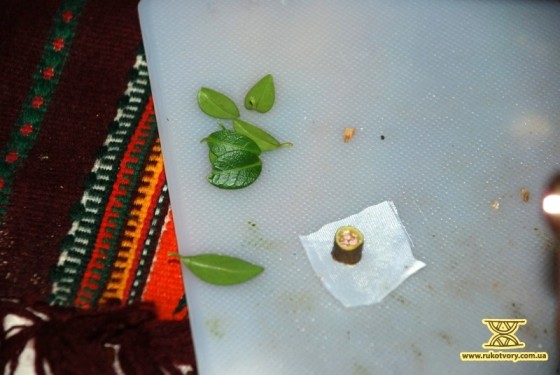
The ring made from an apple tree twig (on white fabric) is filled with sugar, rye grains, bits of coins and a drop of honey
On the Friday before the bride goes to the village her parents cross and bless the couple to be with this wreath and tie it to the main feather wreath of the bride. It has been long believed that this wreath protects children and provides good fate.
After the wedding the young wife has to keep this small wreath or the velvet band. The couple can give away their large feather wreath but not the small one which they are to keep for their entire lives.
On the Saturday the young couple goes to the church to wed wearing modern clothes.
Main traditional dishes at the wedding in Veliky Kluchiv
- Pidpalka (meat broth seasoned with fried flour should be boiled in an oven during the entire night and in the morning the dish becomes very tasty)
- Kulesha with bryndza (boiled corn porridge sprinkled with bryndza bits)
- Golubtsi (cabbage leaves stuffed with meat)
Reality
Mariah Boychuk, the head of the amateur folk band “Kluchiv ornaments”:
“A lot of young people go abroad to earn their bread. Almost each family has someone abroad. It happens that families fall apart because couples are separated and a husband or a wife works abroad. But in general the tendency is to earn some money and to come back to the village so the village prospers.”
Several recordings of wedding songs and tunes of Veliky Klutchiv, Kolomya district in Ivano-Frankivsk region:
[uppod url=https://rukotvory.com.ua/wp-content/uploads/2011/11/VN860063.mp3]
[uppod url=https://rukotvory.com.ua/wp-content/uploads/2011/11/VN860052.mp3]
Kateryna Kachur, “Rukotvory”
